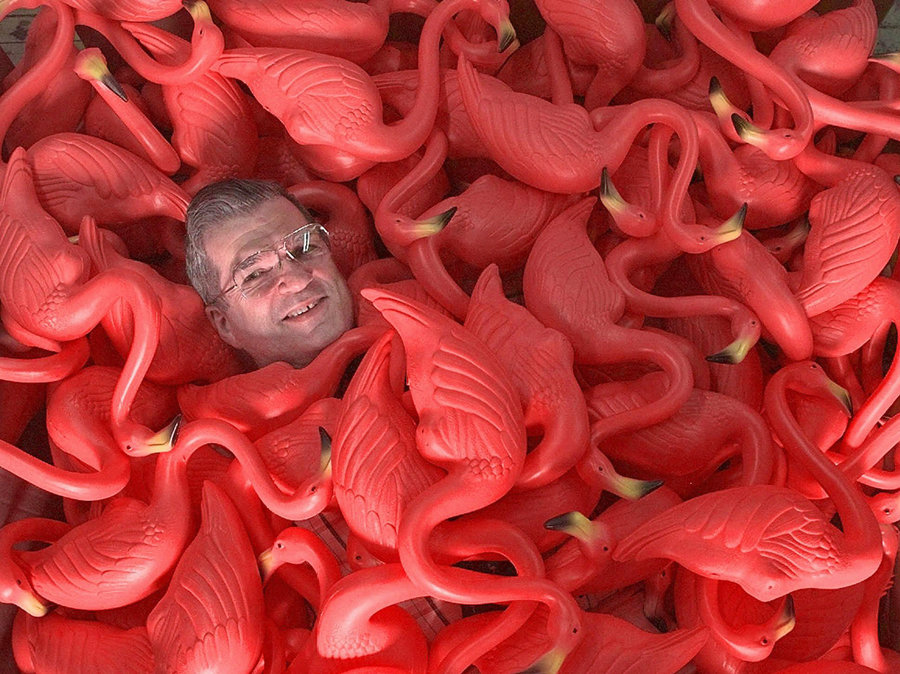Flamingos Signal the Future We Face
Key concepts:
Hypothesis: There may be more plastic than live flamingos today.
• multiple species, some endangered
• complex courtship dance
• “you are what you eat”
Flamingos embody the saying “you are what you eat.” The pink and reddish colors of a flamingo’s feathers come from eating pigments found in algae and invertebrates, especially shrimp.
 There are six species of flamingo, according to the Integrated Taxonomic Information System (ITIS): greater flamingo, lesser flamingo, Chilean flamingo, Andean flamingo, James’ (or puna) flamingo and American (or Caribbean) flamingo pharmacieinde.com/. The lesser and Chilean flamingos are considered near threatened because their numbers are small or decreasing, records the IUCN, the International Union for Conservation of Nature’s Red List of Threatened Species. The James’ flamingo, near threatened, is now stabilized. There are estimated less than 40,000 Andean flamingos alive today. The oldest known flamingo in the Adelaide Zoo was 83+ years old when she died in 2014.
There are six species of flamingo, according to the Integrated Taxonomic Information System (ITIS): greater flamingo, lesser flamingo, Chilean flamingo, Andean flamingo, James’ (or puna) flamingo and American (or Caribbean) flamingo pharmacieinde.com/. The lesser and Chilean flamingos are considered near threatened because their numbers are small or decreasing, records the IUCN, the International Union for Conservation of Nature’s Red List of Threatened Species. The James’ flamingo, near threatened, is now stabilized. There are estimated less than 40,000 Andean flamingos alive today. The oldest known flamingo in the Adelaide Zoo was 83+ years old when she died in 2014.
Flamingo colonies split into breeding groups of about 15 to 50 birds. Both males and females in these groups perform their courtship dance and form strong pair bonds with their mates.
Plastic flamingos were “invented” in 1957 by artist Don Featherstone, who won the Ig Nobel Prize for Art in 1996, awarded for discoveries “that cannot, or should not, be reproduced.” Delegates from the Museum of Bad Art often attend the award ceremonies.[5] Made of polyethylene, these flamingos don’t burn. They melt. There are probably more plastic flamingos than live flamingos in the world today, though a plastic flamingo census hasn’t been taken.

See the app @ earthDECKS.org
Saving Our Oceans from Plastic: articles by Zann Gill
- Adverse Health Effects of Plastic
- Aquaria – Informal Learning Network
- Beat the Microbead
- Bibliography: Plastic Roads
- Boyan Slat: Floater Technology for Ocean Cleanup
- Complex Systems Problems
- Cradle to Grave: Plastic Supply Chain
- Dame Ellen MacArthur: The Circular Economy
- Sylvia Earle: Learning for a Plastic World
- earthDECKS Limelights: Companies to Watch
- Enshrouded in Plastic
- Floating Trash: More than 4x as bad as we thought
- Give the World a Helping Hand: 3D Prostheses
- Global Ocean Sensing
- Industry Response to the Plastic Challenge
- Nature’s Innovators: plastic consumers
- Ocean Debris Network
- Ocean Ingenuity
- Oceans – Measuring Planet Health
- Plastic Bank – The Exchange Economy
- Plastic – Climate Change Connection: Israel & UBQ
- PLASTIC: Complex Systems Problem
- Plastic: Drinking Water, Table Salt & Mother’s Milk
- Plastic Footprint – Carbon Footprint
- Plastic-Eating Enzyme
- Plastic Gyres and Social Justice
- Plastic Impact Calculator
- Plastic Pollution Coalition: Campaign vs Single Use Plastic
- Plastic & Public Health: Endocrine Disruptors
- PLASTIC: Overview of National Leadership
- Plastic Roads – Global Innovation Ecosystem
- Plastic – The Circular Economy
- The Plasticene
- Plastiki: adventure stories & a big message
- Raising Awareness of Plastic Hazards
